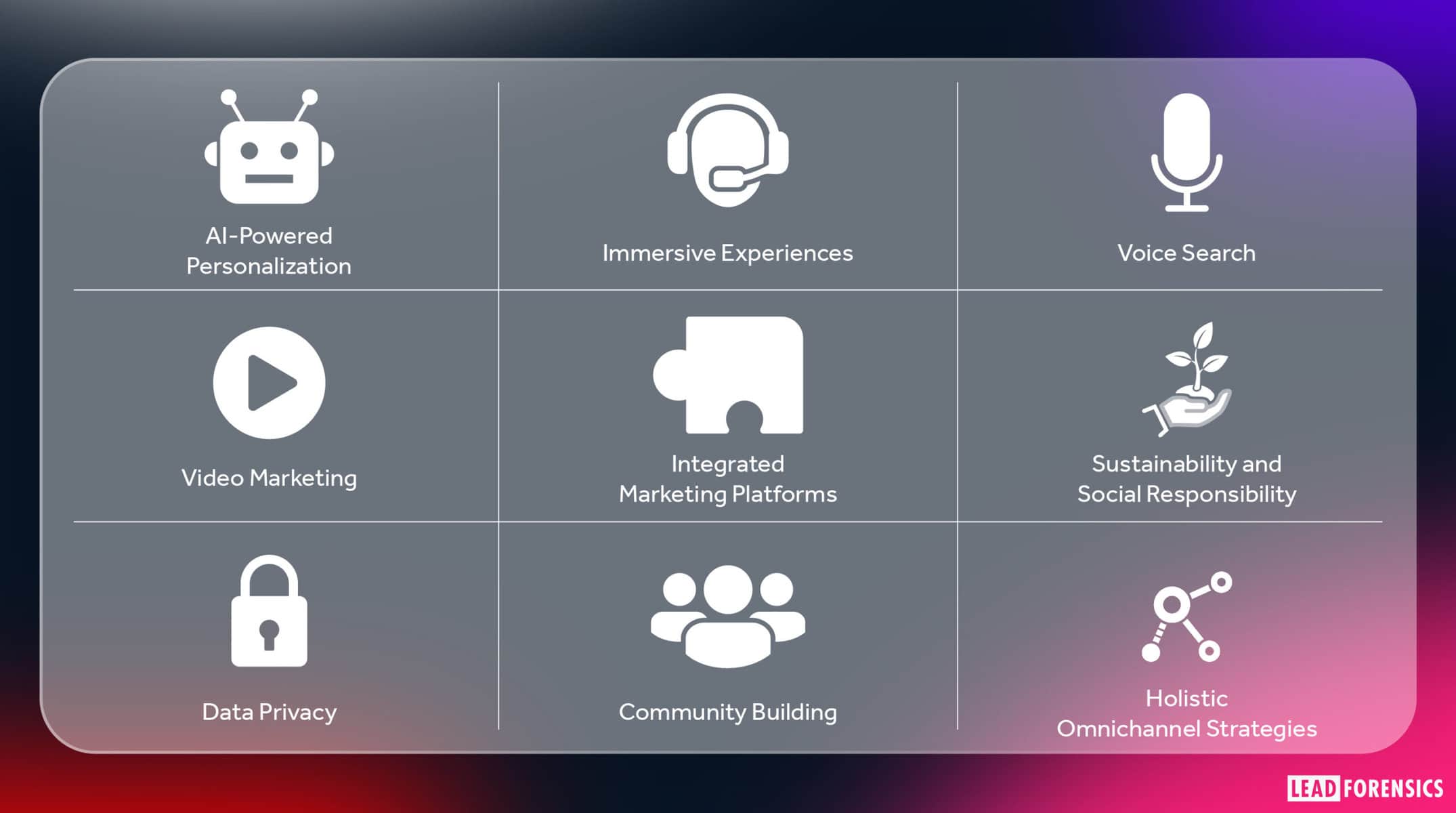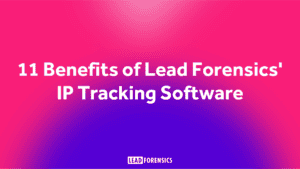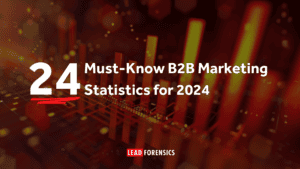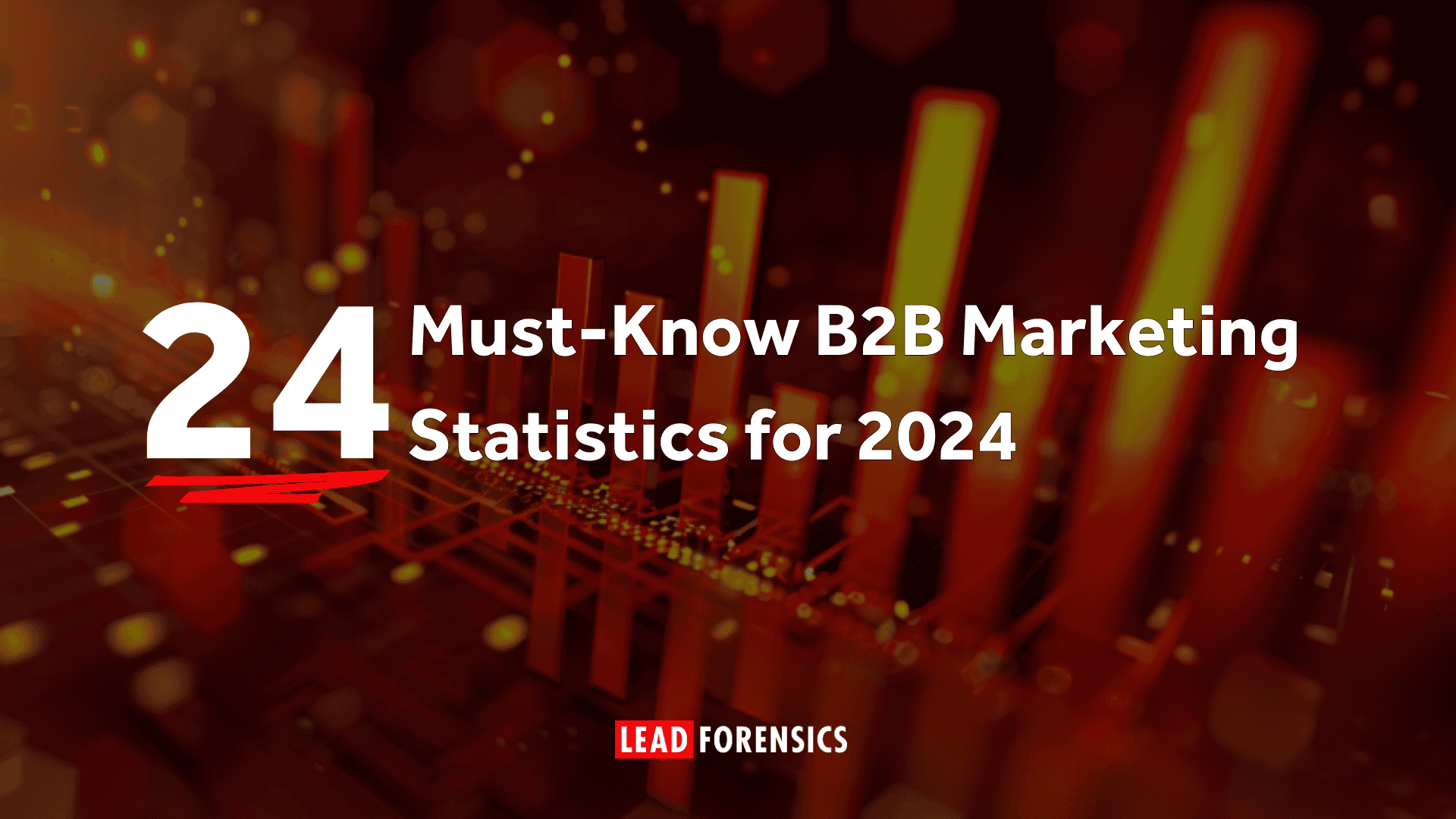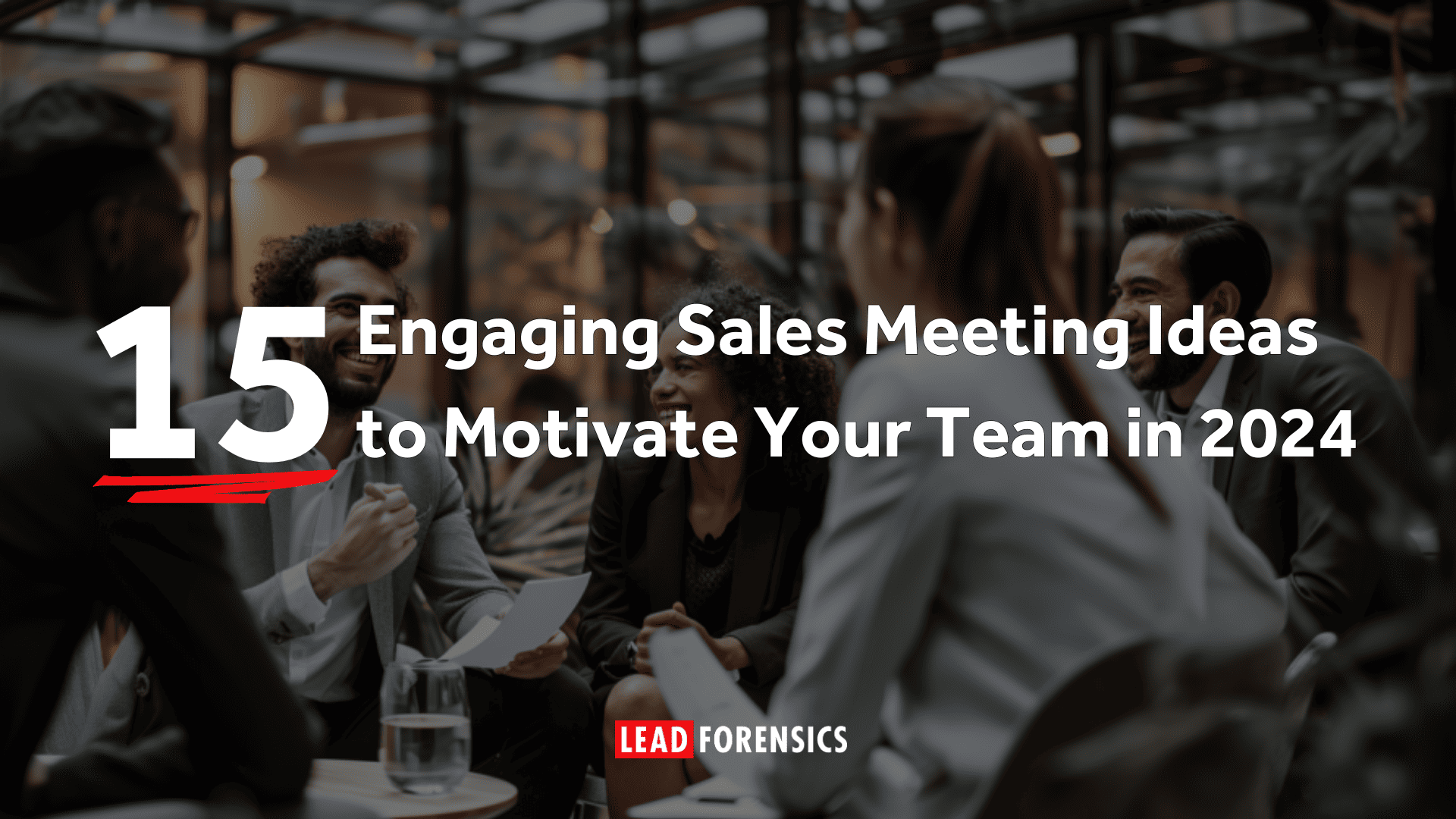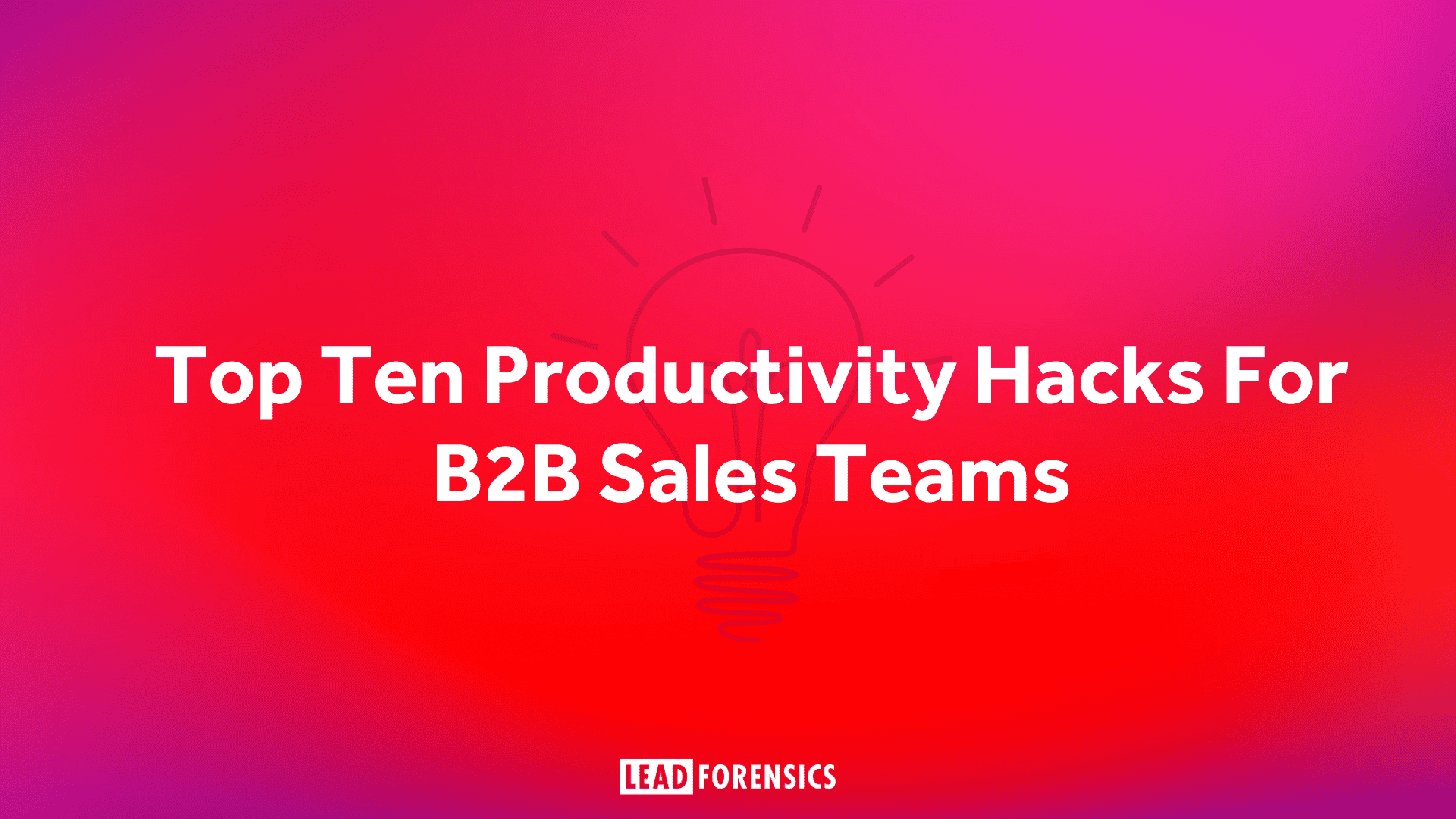1. AI-Powered Personalization: Beyond Algorithms, Into Conversations
We’re in a new era where Artificial Intelligence (AI) isn’t just a futuristic concept—it’s an integral part of our everyday business strategies, with around a third of companies using AI for marketing, sales, and customer support. And as we delve deeper into the world of AI, it’s clear that its potential for reshaping lead generation is immense.
At the heart of this revolution is personalization. Gone are the days of one-size-fits-all marketing campaigns.
Today, AI tools, with their advanced machine learning algorithms, are enabling businesses to craft content and campaigns tailored to individual user behaviors, preferences, and needs. It’s about delivering the right message to the right person at the right time, every single time.
Integrating AI-powered personalization into CRM systems could offer insights into the entire lifecycle of a lead. From the initial point of contact to post-sale engagement, every interaction could be tailored, ensuring that clients feel valued and understood at every stage of their journey.
In essence, the future of AI-powered personalization, especially with tools like ChatGPT, is not just about smarter algorithms; it’s about creating genuine, meaningful, and proactive interactions.
For B2B businesses looking to stay ahead of the curve, embracing this next level of AI-driven personalization will be key to forging deeper connections and driving unparalleled growth. This is a key area to watch over the coming years – there’s a serious competitive advantage to be gained for those at the cutting edge.
2. Immersive Experiences with AR & VR: Welcome to the Metaverse Era
Remember when AR & VR were just the latest toys for gamers? Those days are long gone. Today, Augmented and Virtual Reality are not just trends; they’re the gateways to the metaverse, a digital universe that’s changing the way we do business.
With giants like Meta (formerly Facebook) leading the charge into this new frontier, the metaverse is rapidly becoming the next big thing in marketing. Imagine this: Instead of just telling a potential client about your manufacturing facility for example, you can now invite them for a virtual tour right within the metaverse.
They can walk through your production lines, interact with your products, and even attend virtual meetings – all from the comfort of their office or home.
But it’s not just about virtual tours. With AR & VR, you can offer potential clients a chance to ‘experience’ your product in a simulated environment. Want to showcase a new piece of machinery? Let them ‘use’ it in VR. Launching a new software? Give them an AR demo right on their desk.
The immersive nature of these technologies means that potential leads aren’t just passive observers; they’re active participants. This level of engagement is unparalleled, offering a depth of understanding that traditional marketing tools just can’t match.
In a world where the lines between the physical and digital are blurring, AR & VR are your tickets to the metaverse. And with platforms like Meta paving the way, there’s never been a better time to dive in and explore the limitless possibilities of immersive marketing.
3. Voice Search: The Silent Revolution
Voice search isn’t just the future; it’s the present. With Siri, Alexa, Google Assistant, and now ChatGPT offering conversational capabilities, the way we seek information is undergoing a transformative shift. These voice-activated tools have moved beyond being mere household staples; they’re essential tools for modern businesses.
The beauty of voice search lies in its conversational nature. Unlike traditional typed queries, voice searches are more natural, often phrased as questions or longer statements.
This shift requires a fresh approach to content optimization. For B2B marketers, it’s not just about plugging in keywords; it’s about understanding and anticipating the conversational queries potential clients might use.
For instance, instead of typing “best CRM software 2023,” a CEO might ask their voice assistant, “Which CRM software is recommended for medium-sized businesses this year?” Recognizing and optimizing for these nuanced queries is crucial.
With platforms like ChatGPT entering the voice search arena, the competition is heating up, but so are the opportunities. It’s a clear sign that voice search isn’t just a passing trend; it’s a fundamental shift in how we access and consume information. For B2B marketers, adapting to this shift isn’t just advisable; it’s imperative.
4. Video Marketing: The Visual Edge of Modern B2B Marketing
Step aside, traditional content; the visual age is here. In a world dominated by platforms like TikTok, YouTube, and even Instagram’s IGTV, video content isn’t just preferred—it’s expected. But why has video taken center stage, and what does it mean for B2B marketers?
Let’s talk engagement. Videos, by their very nature, are immersive. They capture attention, evoke emotion, and most importantly, tell a story. Whether it’s a behind-the-scenes look at your company culture or a detailed product breakdown, videos offer a multi-sensory experience that static content simply can’t match.
Consider webinars, for instance. They’re not just presentations; they’re interactive sessions where potential leads can ask questions, dive deep into topics, and engage with experts in real-time. It’s a two-way street of information exchange, fostering a sense of community and connection.
Then there are product demos. A well-crafted video demo doesn’t just list features; it showcases benefits. It allows potential clients to visualize how your product or service fits into their operations, solving problems and adding value. It’s one thing to tell a lead that your product is revolutionary; it’s another to show it in action.
Live streams take this a step further, offering real-time engagement. They humanize your brand, allowing leads to interact with the faces behind the name, ask questions, and get immediate responses. It’s spontaneous, authentic, and incredibly powerful in building trust.
But it’s not just about the big productions. Even short, informal video snippets—think quick tips, company updates, or industry news—can be incredibly effective. They position your brand as both an industry leader and a relatable entity, striking a balance between authority and approachability.
In essence, video marketing transcends traditional content boundaries. It’s dynamic, versatile, and incredibly potent in conveying complex information in digestible, engaging bites.
5. Integrated Marketing Platforms: Seamless Synergy for Success
Remember the days when you’d switch between your CRM, your email marketing tool, and your analytics dashboard, trying to piece together a coherent picture? Those days are thankfully behind us, thanks to Unified Marketing Platforms.
These platforms are the Swiss Army knives of the marketing world. They bring together all the tools you need under one roof, eliminating the need for constant toggling and data cross-referencing. With everything integrated, you get a 360-degree view of your lead generation process. No more data silos or disjointed insights; just clear, cohesive, and actionable information.
But it’s not just about convenience. Integrated platforms ensure that every lead is nurtured, tracked, and engaged with, from the first touchpoint to the final sale. By streamlining operations, they reduce the risk of missed opportunities, ensuring that every potential client gets the attention they deserve.
And here’s the cherry on top: tools like Lead Forensics not only supercharge your lead generation process but also seamlessly integrate with many CRM systems.
This means you can effortlessly sync your lead data, ensuring that your sales and marketing teams are always on the same page, working with real-time insights. It’s about making your tools work smarter, not harder, and driving results with precision and efficiency.
So, if you’re looking for a way to elevate your lead generation game, it’s time to embrace the power of integrated marketing platforms.
In an age where information is at our fingertips, today’s consumers and decision-makers are more informed and conscious than ever before. They’re not just looking for products or services; they’re seeking partnerships with businesses that reflect their values and principles. Sustainability and social responsibility have transitioned from being mere buzzwords to foundational pillars for businesses aiming to thrive in this new landscape.
But why is this shift so profound, especially in the B2B realm?
Firstly, there’s a growing recognition that businesses have a role to play in addressing global challenges, be it climate change, social inequality, or ethical governance.
Companies are no longer judged solely on their products or profits but on their impact on the world. This has given rise to the conscious decision-maker, who evaluates potential business partners not just on their offerings but on their ethos and actions.
For B2B businesses, this means that sustainability and social responsibility can’t just be checkboxes or afterthoughts. They need to be woven into the very fabric of the company’s operations, culture, and brand narrative. Whether it’s adopting eco-friendly practices, supporting community initiatives, or ensuring ethical supply chains, these efforts need to be genuine, transparent, and front and center.
Showcasing a commitment to these values isn’t just about attracting leads; it’s about attracting the right leads. Engaging with clients who share these values often results in deeper, more meaningful partnerships.
These are clients who are likely to be loyal, engaged, and collaborative, seeing the relationship not just as a transaction but as a joint venture towards a better future.
6. Sustainability and Social Responsibility: The Heartbeat of Modern Business
Today’s consumers and decision-makers are more informed and conscious than ever before. They’re not just looking for products or services; they’re seeking partnerships with businesses that reflect their values and principles.
Sustainability and social responsibility have transitioned from being mere buzzwords to foundational pillars for businesses aiming to thrive in this new landscape.
There’s a growing recognition that businesses have a role to play in addressing global challenges, be it climate change, social inequality, or ethical governance.
Companies are no longer judged solely on their products or profits but on their impact on the world. This has given rise to the conscious decision-maker, who evaluates potential business partners not just on their offerings but on their ethos and actions.
For B2B businesses, this means that sustainability and social responsibility can’t just be checkboxes or afterthoughts. They need to be woven into the very fabric of the company’s operations, culture, and brand narrative.
Whether it’s adopting eco-friendly practices, supporting community initiatives, or ensuring ethical supply chains, these efforts need to be genuine, transparent, and front and center.
Showcasing a commitment to these values isn’t just about attracting leads; it’s about attracting the right leads. Engaging with clients who share these values often results in deeper, more meaningful partnerships.
These are clients who are likely to be loyal, engaged, and collaborative, seeing the relationship not just as a transaction but as a joint venture towards a better future.
Championing sustainability and social responsibility can significantly bolster a company’s image. Positive PR, word-of-mouth referrals, and even awards or recognitions can amplify a company’s reach and credibility in the market.
7. Data Privacy: Navigating the New Frontier of Trust
The digital age, with all its conveniences and innovations, has brought with it a pressing concern: data privacy. As stories of data breaches, unauthorized data sales, and misuse of personal information flood the headlines, the trust once taken for granted between businesses and their clients is under scrutiny.
One of the most significant shifts in this landscape has been the phasing out of third-party cookies. These trackers, which have long been the backbone of online advertising and user tracking, are being abandoned in favor of more privacy-centric approaches.
Tech giants like Apple are leading the charge in this domain, introducing stringent privacy features that give users more control over their data. Apple’s continuous work on privacy, such as its App Tracking Transparency feature, is a testament to the changing tides.
These moves, while applauded by privacy advocates, mean businesses need to rethink their data collection and marketing strategies.
But it’s not just about adapting to technological changes; it’s about embracing a new ethos. Transparent and ethical data collection and storage practices are no longer optional—they’re a necessity.
Companies need to be clear about what data they’re collecting, why they’re collecting it, and how it will be used. This transparency isn’t just about compliance with evolving regulations; it’s about building and maintaining trust. In a world where trust is a currency, businesses that prioritize data privacy position themselves as reliable, ethical, and customer-centric.
Moreover, as third-party data becomes less accessible, the value of first-party data—information given directly by the customer to the business—skyrockets.
This data, when collected ethically and used responsibly, offers businesses invaluable insights into their customers’ preferences, behaviors, and needs. It’s richer, more accurate, and far more trustworthy than data gleaned from third-party sources.
This is where tools like Lead Forensics come into play. By helping businesses gather and analyze first-party data, Lead Forensics ensures that companies can tailor their strategies based on genuine customer insights, all while adhering to the highest standards of data privacy.
8. Community Building: Cultivating Relationships in the Digital Ecosystem
In the vast expanse of the digital world, where businesses and consumers alike are constantly bombarded with messages, advertisements, and calls to action, there’s a growing yearning for genuine connection. This is where the power of community building comes into play, offering a refreshing departure from transactional interactions and ushering in an era of meaningful relationships.
Here’s a deeper dive into why community building is becoming a cornerstone for modern businesses:
Humanizing the Brand: At its core, every business is about people—those who run it and those it serves. Building a community allows businesses to showcase their human side, sharing stories, values, and passions that resonate on a personal level with potential leads.
A Platform for Engagement: Vibrant online communities offer members a space to voice their opinions, ask questions, and share experiences. For businesses, this means a direct line of communication with their audience, allowing them to address concerns, gather feedback, and foster goodwill.
Showcasing Expertise: Communities, especially those built around specific industries or interests, provide businesses an opportunity to demonstrate their expertise. By sharing insightful articles, answering queries, or hosting webinars, businesses can position themselves as thought leaders in their domain.
Building Trust Through Value: In a community, the primary focus shifts from selling to providing value. Whether it’s through exclusive content, expert advice, or special offers, businesses can cultivate trust by consistently delivering value to their community members.
Loyalty and Advocacy: A well-nurtured community doesn’t just foster loyalty; it creates brand advocates. Members of a thriving community are more likely to champion the brand, recommend it to peers, and contribute positively to its reputation.
Adapting to Evolving Needs: Active communities are gold mines of insights. By staying attuned to discussions and feedback, businesses can gain a deeper understanding of their audience’s evolving needs, preferences, and pain points, allowing them to adapt their offerings and strategies accordingly.
In essence, community building is about shifting the narrative from “What can we sell?” to “How can we serve?” It’s about recognizing that in the digital age, where choices are aplenty, genuine relationships and trust are the true differentiators. By investing in community building, businesses are not just aiming for short-term transactions; they’re laying the foundation for long-term partnerships and sustained growth.
9. Holistic Omnichannel Strategies: Crafting a Unified ‘Brand Symphony’
A potential lead’s journey is rarely linear. They might stumble upon a brand while scrolling through their social media feed, get intrigued by an article shared in an email newsletter, and finally cement their interest at an in-person event or webinar. This multi-faceted journey, with its myriad touchpoints, underscores the importance of a holistic omnichannel strategy.
But what does “omnichannel” truly mean for businesses?
At its core, an omnichannel approach is about understanding and optimizing every single touchpoint a potential lead might have with a brand. It’s not just about being present on multiple channels; it’s about ensuring that the brand’s voice, message, and experience remain consistent and harmonious across them all. It’s the difference between playing random notes on an instrument and crafting a captivating melody.
This approach helps to create a unified brand perception, a seamless user experience, data-driven insights and boosted conversions.
In the age of digital transformation, where the lines between online and offline worlds are increasingly blurred, an omnichannel strategy isn’t just a nice-to-have—it’s a necessity. It’s about meeting potential leads where they are, offering them a consistent and compelling brand story, and guiding them smoothly along their journey from curiosity to conversion.


